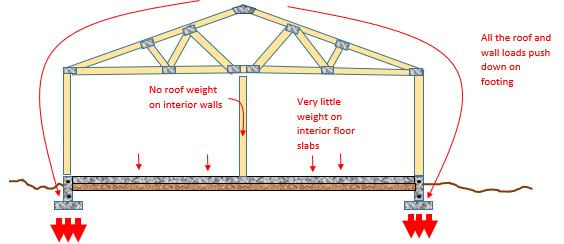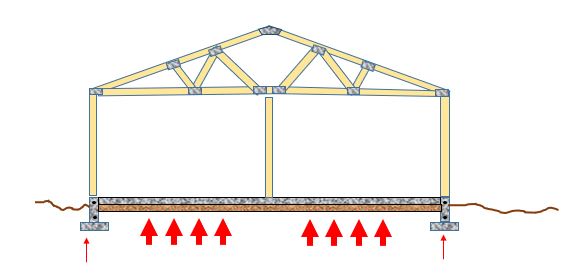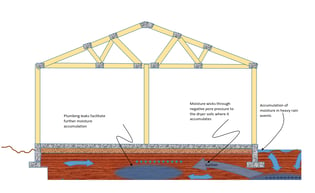Rules of Thumb for Diagnosing Foundation Problems Part IV: Foundation Types
What type of Foundation do you have? The type of foundation plays a significant role in helping determine heave vs. settlement. There are three common types of foundations:
- Floating Floor Slab
- Post-tensioned Foundation
- Pier & Beam Foundation (with a crawl space)
More detail on these foundations types may be found in my book (pages 5-7). Get your free copy here!


 Now, let’s look at the opposite scenario! The forces that push up have much more influence on a floor slab than they do on a footing. The area of the floor is large with very little weight on it leaving it susceptible to soil heaving. On the other hand, the footings have a smaller area are lower, and are much less susceptible to heave.
Now, let’s look at the opposite scenario! The forces that push up have much more influence on a floor slab than they do on a footing. The area of the floor is large with very little weight on it leaving it susceptible to soil heaving. On the other hand, the footings have a smaller area are lower, and are much less susceptible to heave.
In summary, slabs heave more easily than footings and footings settle more easily that slabs. Slabs may settle following footings, however but usually not on their own. Of course, there are always going to be exceptions. On occasion, we have found a slab settling when a deep soil problem caused the soil to settle under its own weight and the slab followed it, but again, that is unusual.
Another exception may occur when there are high stem walls (more than 24”) and poor back filling inside the stem wall. This may result in floor slabs that settle without footing settlement, particularly where local practices use less than ideal fill such as cinder rock (Northern Arizona).
Next: Rules of Thumb V: https://www.foundationaz.com/blog/rules-of-thumb-for-diagnosing-foundation-failure-part-v-the-truth-about-pt
Previous: Rules of Thumb III: https://www.foundationaz.com/blog/rules-of-thumb-diagnosing-foundation-problems-part-iii







